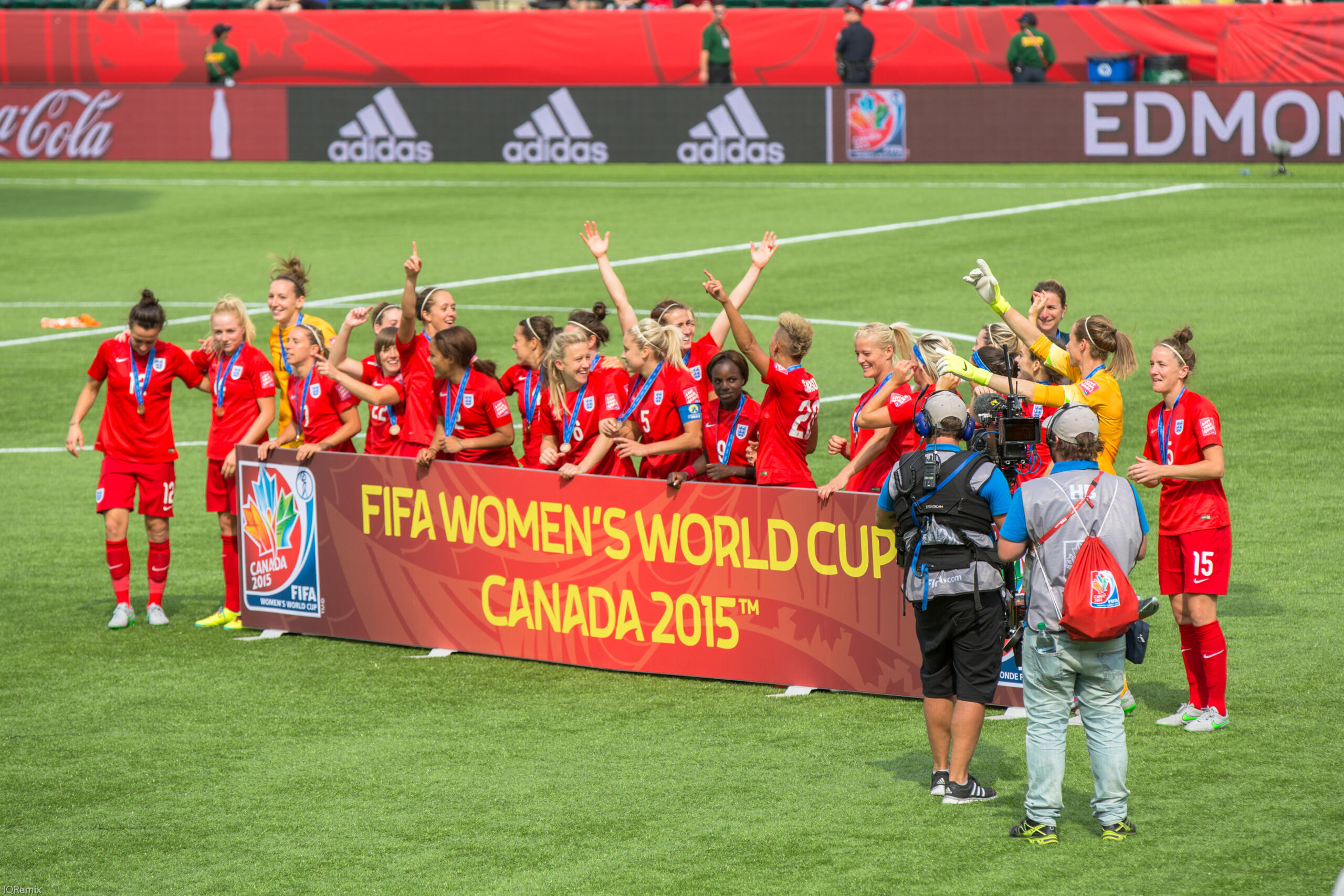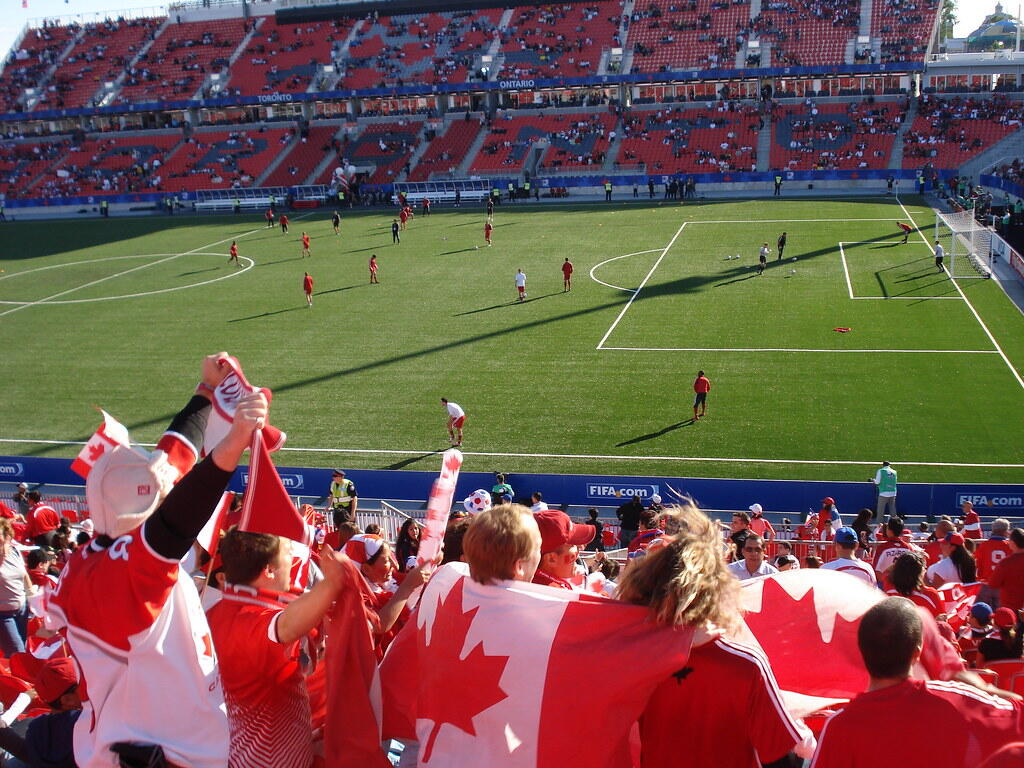Soccer is the world’s most popular sport, but how does it fare in Canada? This cultural overview explores the growing influence of soccer, its role in Canadian society, and how it’s shaping the nation’s sports culture.
Once considered a niche sport behind hockey and basketball, soccer has steadily grown into one of the most widely played and passionately followed sports in the country. From youth fields in suburban neighborhoods to sold-out stadiums, soccer’s rise in Canada has been decades in the making, and it’s now reaching new heights.
Soccer is one of the top 3 participation sports for youth in Canada.

The Rise of Soccer’s Popularity in Canada
Once considered a niche sport behind hockey and basketball, soccer has steadily grown into one of the most widely played and passionately followed sports in the country. From youth fields in suburban neighborhoods to sold-out stadiums, soccer’s rise in Canada has been decades in the making, and it’s now reaching new heights.
The sport’s early momentum came through immigrant communities and grassroots clubs, where generations of families passed down their love for the game. Today, soccer boasts one of the highest youth participation rates in the country, supported by thousands of local organizations and Canadian clubs committed to development.
The launch of the Canadian Premier League in 2019 gave domestic talent a much-needed professional platform. Since then, Canadian Premier League expansion has helped grow the sport’s national footprint, offering more opportunities for players, coaches, and communities to engage at a professional level. Combined with a growing number of Canadian soccer players starring in top European leagues, the country’s soccer identity is stronger than ever.
2015
World Stage Debut
Canada hosts the FIFA Women’s World Cup, drawing global attention and record-breaking attendance.
2019
Domestic League Launch
The Canadian Premier League is launched, offering a professional pathway for homegrown talent.
2021
Statement Wins
Canada’s men’s national team defeats Mexico and USA in World Cup qualifiers — first time since 1980s.
2022
World Cup Return
Canada qualifies for the men’s FIFA World Cup for the first time in 36 years.
2023
Continental Breakthrough
Canadian clubs participate in expanded continental competitions, gaining regional visibility.
2026
World Cup Co-Host
Canada is set to co-host the FIFA World Cup alongside the U.S. and Mexico, with matches held in major cities like Toronto and Vancouver.
With elite development pathways, passionate supporters, and an upcoming home-field advantage in the World Cup in 2026, soccer isn’t just growing in Canada — it’s thriving.
The Role of Soccer in Canadian Culture
Soccer plays a unique and unifying role in Canadian culture, acting as a bridge across communities, generations, and backgrounds. In a country celebrated for its cultural diversity, soccer stands out as a common language, played and loved by millions regardless of origin. Whether in urban centers or rural towns, the sport offers a shared space where newcomers and long-time residents alike can connect through competition, teamwork, and passion for the game.
Its widespread appeal also stems from its accessibility. With minimal equipment needed, soccer is one of the most affordable sports in the country, making it especially popular among youth and immigrant families. Local fields, schoolyards, and community programs make it easy to play, while leagues and tournaments help build lasting connections and friendships.

Beyond recreation, soccer promotes key values: health, collaboration, and a sense of belonging. Events like the soccer Canadian championship not only showcase elite talent but also inspire local communities and young players to dream bigger. As both a grassroots sport and a growing professional movement, soccer is deeply embedded in Canada’s evolving cultural identity.

Professional Soccer Leagues and Teams in Canada
Canada’s professional soccer scene has grown rapidly in recent years, creating more opportunities for players and bringing passionate fans into stadiums across the country. From international tournaments to local derbies, professional football in Canada has never been more exciting or more relevant.

At the top of the domestic pyramid is the Canadian Premier League (CPL), launched in 2019 to provide a professional platform tailored to homegrown talent.
With clubs like Forge FC, Cavalry FC, and Pacific FC, the CPL plays a vital role in player development and community engagement. The league is already producing players who are making an impact both at home and abroad, and its expansion signals a long-term commitment to growing the game in Canada.
To understand how Canada’s soccer system is structured, here’s a quick look at the country’s major leagues and their role in developing the sport:
| League | Tier | Founded | No. of Canadian Clubs | What It’s Known For |
|---|---|---|---|---|
| Canadian Premier League (CPL) | Tier 1 | 2019 | 8 | Canada’s top domestic league, focused on developing Canadian talent |
| Major League Soccer (MLS) | Tier 1 (U.S.-based league with Canadian teams) | 1996 (CAN clubs from 2007) | 3 (Toronto FC, CF Montréal, Vancouver Whitecaps) | Elite North American competition with strong international visibility |
| League1 Canada (umbrella) | Tier 3 | 2022 | 40+ across 4 regional leagues | Semi-pro development league system feeding CPL and national teams |
| U Sports (University) | Amateur | Varies | 40+ | Canada’s top university league; key scouting ground for future pros |
Alongside the CPL, three Canadian clubs compete in Major League Soccer (MLS): Toronto FC, Vancouver Whitecaps, and CF Montréal. These teams have brought global visibility to Canadian soccer, regularly attracting large crowds and developing some of the country’s biggest stars.
Here’s a quick breakdown of Canada’s MLS teams and their key achievements:
| Club | City/Province | Joined MLS | Stadium | Notable Achievements |
|---|---|---|---|---|
| Toronto FC | Toronto, ON | 2007 | BMO Field | MLS Cup (2017), 3× Canadian Championship winners |
| Vancouver Whitecaps | Vancouver, BC | 2011 | BC Place | Multiple Canadian Championships, consistent playoff presence |
| CF Montréal | Montréal, QC | 2012 | Stade Saputo | CONCACAF Champions League finalist (2015), domestic titles |
One of the most notable success stories is Alphonso Davies, who began his professional career with the Vancouver Whitecaps before becoming a star at Bayern Munich. His rise, along with that of Jonathan David, Cyle Larin, and Jessie Fleming, shows how Canadian soccer players are increasingly shaping the international team landscape.
With Canada set to co-host the 2026 World Cup, these leagues are more important than ever. They’re building the infrastructure and competitive environment that will prepare the next generation of Canadian players for the group stage, the final, and everything in between. And as the world watches Canada play on home soil, the history, score, and pride of the nation will be shaped by the clubs and leagues that nurtured its stars.
Challenges and Opportunities for Soccer in Canada
As soccer gains momentum in Canada, it still faces notable challenges. Chief among them is the long-standing dominance of sports like hockey and basketball, which continue to command greater media attention, sponsorship, and funding. Many communities prioritize rink time or gym space over soccer fields, and young athletes often choose sports with more visible professional pathways.
Yet, the landscape is shifting. The upcoming 2026 FIFA World Cup, which Canada will co-host alongside the U.S. and Mexico, represents a major opportunity.
Hosting matches on home soil is expected to ignite national pride, attract new fans, and drive investment into soccer infrastructure, from upgraded stadiums to expanded youth development systems.

One of the biggest growth areas is grassroots development - these efforts are especially important in immigrant and lower-income communities where soccer is already popular. They help shape future talent and show young players how to become a soccer player in Canada, whether aiming for a scholarship, a spot in the CPL, or the international stage.
A bottom-up approach where local communities shape and drive soccer programs based on their own needs — ensuring they reflect local culture, context, and accessibility.
Investments in coaching education, year-round training facilities, and inclusive programming are helping soccer gain a stronger foothold. While competition from traditional sports remains stiff, the combination of international exposure, community engagement, and long-term planning suggests that soccer’s future in Canada is not just promising - it’s already underway.
Soccer’s Impact on Canadian Youth and Communities
Soccer plays a powerful role in shaping the lives of young Canadians. As one of the most accessible sports in the country, it brings together children and teens from all backgrounds, promoting inclusion, teamwork, and social development. Whether through after-school programs, community leagues, or school tournaments, soccer gives youth a sense of belonging and purpose.
Local clubs and grassroots initiatives across Canada help nurture not just talent, but confidence, discipline, and leadership.

Programs like Free Footie in Edmonton provide free soccer access to kids who can’t afford fees, gear, or transportation, ensuring no child is left on the sidelines.
In many communities, soccer has become a unifying force. After Canada’s qualification for the 2022 FIFA World Cup, towns across the country organized watch parties, school events, and street celebrations - moments that brought neighbours, newcomers, and lifelong fans together.
The Future of Soccer in Canada
With Canada set to co-host the 2026 FIFA World Cup, the sport is poised for a major breakthrough. For the first time, Canadian fans will experience World Cup matches on home soil, with games scheduled in Toronto and Vancouver — two of the 16 elite stadiums selected across North America. These world-class venues have massive seating capacities, state-of-the-art technology, and global visibility, offering a once-in-a-generation chance to elevate the game’s profile nationwide.
Besides from the matches themselves, the World Cup is expected to leave a lasting legacy. Increased media coverage, corporate sponsorship, and investment in soccer infrastructure will likely fuel greater participation, particularly among youth and newcomers. With millions expected to attend matches and billions more watching worldwide, soccer’s presence in Canadian culture will only grow stronger.
Looking ahead, the question isn’t whether soccer will grow, but how much. With grassroots momentum, top-tier professional leagues, and national teams making international headlines, soccer has the potential to rival hockey in popularity over the coming decades.
Will Soccer Rival Hockey in Canada?🤔

















